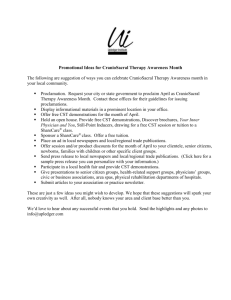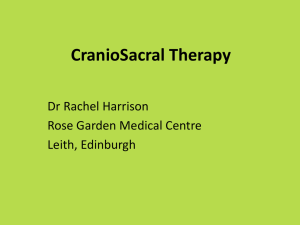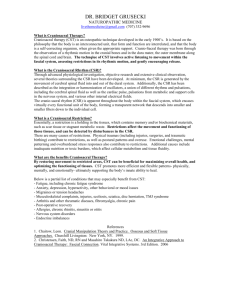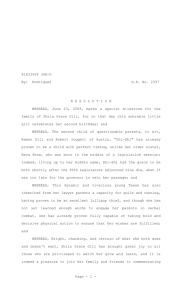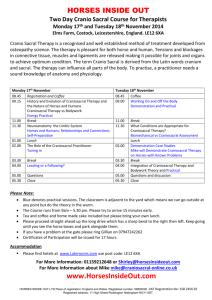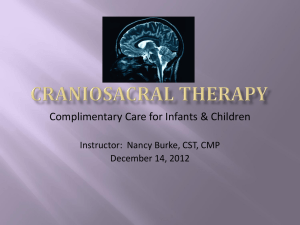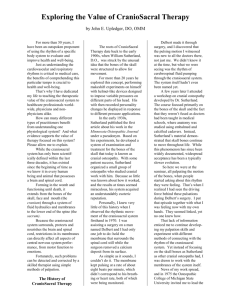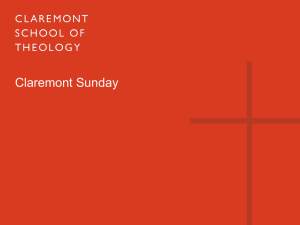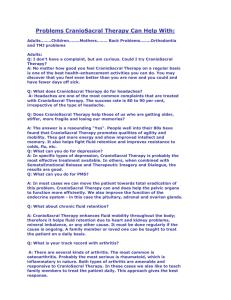Craniosacral Therapy and Brain Injury presented by Janet (Shila
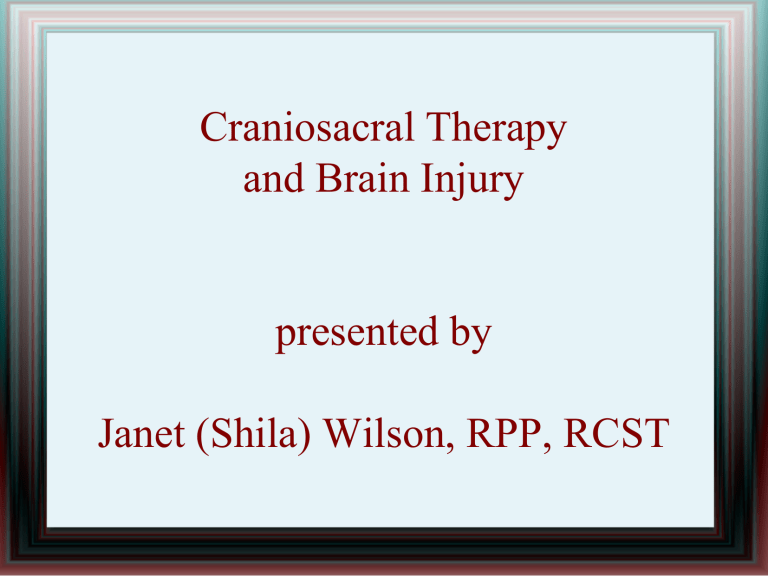
Craniosacral Therapy and Brain Injury presented by
Janet (Shila) Wilson, RPP, RCST
Dr. William Garner
Sutherland
●
Developed CST
●
Hypothesized that the cranial bones had movements as if for respiration.
●
He felt a “wave-like” movement of the bone,
CSF, and connective tissue.
“The Breath of Life”
●
The “Ordering
Principle” which maintains health in the body/mind.
●
“Intelligent Life Force”
●
Communicates this order to all the cells and tissues of the body.
●
Maintains homeostasis
Injury and Trauma
●
Any situation that is physically or emotionally threatening or dangerous to a person is potentially traumatic.
●
Trauma can become locked into the body in chronic tension patterns
(that are meant to be protective)
●
These patterns interfere with the expression of the Breath of Life
How CST Works
“Slow wave (i.e. Theta) deficiency in the occipital region is associated with poor stress tolerance, sleep disturbance, racing thoughts, generalized anxiety, and vulnerability to substance addiction.”
Paul Swingle, PhD, FCPA, Rpsych
(Craniosacral Therapy Alters Brain Functioning: A Clinical Overview by John
Upledger DO, OMM., printed in Massage Today, Dec. 2003)
●
Increases alpha brainwave amplitude
●
Increases theta brainwave amplitude
●
Quiets the brain, allowing a physiological rest and revitalization
●
Quiets and calms sensory motor rhythm
(body quieting)
Biodynamic Craniosacral Therapy
●
A branch of CST that is less manipulative than other forms
●
The focus is on allowing the client's system to generate change from within, with support and safety
●
Recognizes the
“Inherent Treatment
Plan” that emerges from within the client
●
Intention is not to “fix” problems, but encourage new levels of order in body/mind
Keep in mind....
Any form of craniosacral therapy is not a substitute for medical treatment and the plan you are following. It can be a helpful complementary therapy to any medical treatment you are currently receiving.
Feel free to contact me for further information:
Thank you!
Janet (Shila) Wilson, RPP, RPE,RCST janet.shila.wilson@att.net
740-350-6227
Website with info on BCST: www.craniosacraltherapy.org
